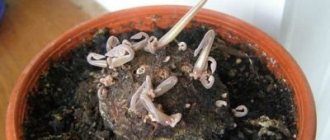When and where do violets bloom?
Abundant flowering of violets with proper care is possible all year long. And the best place to grow them is a windowsill. There are a number of differences in caring for Saintpaulia during the cold period. How to make violets bloom in winter:
- you need to protect indoor Saintpaulia from the cold;
- add lighting with fluorescent lamps for 2-3 hours a day;
- remove all side sockets;
- water 2 times a week.
In summer, more abundant and frequent watering is required.
How to make a violet bloom with a cap
The conditions for a violet to bloom in a bouquet, or, as it is also called, a cap, are, first of all, the varietal property (there are varieties that, even with the greatest and most careful attempts of the owner, cannot bloom with a cap), the growth of all peduncles from the very top of the rosette and the same age all flower stalks.
It is possible to ensure the growth of peduncles from the top of the rosette by extending daylight hours to the optimal 12 hours. In addition, it is important to maintain the air temperature at approximately 20 C, monitor the condition of the soil, replant the plant on time and enrich it with phosphorus fertilizer every two weeks.
If the violet has not yet bloomed, it is important to allow the rosette to grow many leaves, more than one layer, and only then allow the plant to become covered with flowers. To do this, all the children and flower stalks are pinched off. Only after the plant has grown and has enough leaves, the production of peduncles stops, the conditions described above are created, and the plant will bloom with a beautiful cap.
How to create conditions for flowering at home
To grow a flower, you need to use plastic pots, gradually increasing their size as the bush grows. Ceramic containers are not very suitable for Saintpaulia. They release salts that are harmful to the plant.
The soil adjacent to the walls of a clay pot dries out quickly, injuring the root system of Saintpaulia; violets growing in ceramic containers must be constantly monitored to prevent the soil from drying out. Plants in plastic containers need watering much less often.
You need to follow the recommendations on how to make violets bloom all year round, and then the buds will constantly please the eye:
- choose a location where there is plenty of light and no burning sun rays;
- avoid drafts;
- water with settled and boiled water;
- provide a high level of humidity;
- update bushes;
- plant plants in breathable, moisture-absorbing soil.
Temperature
The plant loves warmth. On a cold windowsill and with constant drafts, it will not feel comfortable. The most suitable temperature regime for it: +17…+20°С. It is also not worth heating the room where the flower is located above this indicator.
Air humidity
Saintpaulia requires medium to high ambient humidity. It is advisable that this figure does not fall below 50%. It is better not to spray flowers. If the air is too dry, then irrigation should be carried out near the pot using a fine sprayer. Spraying is allowed only during flowering. In other cases it is prohibited. It is necessary to ensure that drops of water do not fall on the leaves, otherwise, under the influence of sunlight, red spots will form in these places.
Violet does not tolerate hot, dry air well. If the ambient temperature has risen too high, it is recommended to place the Saintpaulia pots on a wide tray filled with wet peat, sand, expanded clay or pebbles. The flowers should be placed so that the bottom of the pots does not come into contact with the fillers. To do this, you need to equip an air cushion. Air access to the violet roots through the drainage holes should always be open.
Or you can place containers with Saintpaulia between other plants, from the surface of which moisture evaporates well. This proximity will help create the humid microclimate necessary for violets.
Lighting
Proper lighting is one of the requirements for how to make violets bloom constantly at home. Saintpaulia is a shade-tolerant crop. For normal growth and flowering, the plant needs 2500 lux of light. Such illumination often occurs in the Urals region on cloudy and rainy days. Whether the lighting is suitable for the plant can be determined by the state of the crown. If there is not enough light, the leaves will stretch upward; if there is too much light, they will bend under the edge of the pot.
To achieve lush violet flowering, the pot must be rotated periodically, otherwise the rosettes will turn out one-sided. In addition, Saintpaulia must be in a sufficiently lit place for 50-60 days in order for the cap to bloom. The required daylight hours should be from 10 to 12 hours.
To ensure that violets bloom all year round, you can place them on shelves with constant artificial lighting. The plant does not have a genetically programmed dormant period, like other crops.
Different varieties of Saintpaulia have their own requirements for lighting parameters. Bushes with light green foliage thrive in a small amount of light, but violets with a rich dark crown color bloom poorly in the same conditions.
Location
Flowers love good lighting, but direct sunlight is destructive for them. It is best to place pots with plants on windowsills on the north or west side. When growing violets near eastern or southern windows, you will have to stock up on light curtains or at least mosquito nets. This way you can reduce the negative impact of hot sun rays on your indoor flower.
It is best to use seasonal accommodation. And in summer, place pots on the north, east or west side, and in winter - on the south.
Sunkissed Rose
During flowering, the violet is showered with large inflorescences. Sunkissed Rose's petals are ruffled and pale yellow. In the center the flower is darker. Some petals have a pinkish border.
The color of the inflorescence may vary. This usually depends on the conditions of detention. Sometimes the flower looks golden. And after some time, the same plant produces pink inflorescences.
The opening buds are almost white, and towards the end of flowering they turn orange.
An interesting feature of the variety: the flowers of Sunkissed Rose are not large, but the bouquet seems very lush. Each bud remains fresh for about 10 days.
To prolong flowering, it is necessary to provide the plant with a low air temperature. In addition, when it is hot, the peduncles are short, which spoils the appearance of the violet.
Spraying gives positive results. But it is not advisable to point the spray bottle directly at the plant, especially if it is on the windowsill. Droplets of water can leave unsightly stains on the leaves.
Between flowering periods the plant rests. It takes him 1 to 3 months to recover.
Care during flowering
Caring for blooming Saintpaulia at home involves timely watering, periodic feeding and replanting. In addition, you need to constantly monitor the surrounding microclimate. Then there will be no problem that the plant has many leaves and few flowers.
What should be done for proper watering:
- Start moistening the soil when the surface of the soil is dry. In winter, Saintpaulia needs watering every 3 days, and in summer - daily.
- Take water for irrigation at room temperature or even warmer.
- It is recommended to first settle it, then boil or filter it. These manipulations will help remove salts from the liquid.
- When watering, use a watering can to evenly moisten the soil.
- You can use wick watering of flowers. To do this, pour water into the pan and wait until the roots absorb some of the liquid. After 15 minutes, drain the remainder.
One of the reasons why violets do not bloom at home is the presence of side shoots. They shouldn't be in the pot. All formed branches are transplanted into a separate container. It is recommended to choose ready-made soil, specifically designed for Saintpaulias. It contains all the nutrients the plant needs.
If you use plain soil for replanting, add perlite or vermiculite to it. These substances will help the soil retain moisture well.
It would also be useful to add natural antiseptics, such as moss and charcoal, to the finished soil. Before planting the plants, the substrate is checked for acidity. Violets are suitable for a slightly acidic environment.
For constant flowering, the plant also needs rejuvenation. Reproduction of Saintpaulia at home is carried out in several ways:
- Leaves in soil or water. First, choose a leaf for rooting. The size of the plant, its growth and flowering will depend on this. It is best to choose a leaf right next to the peduncle or in the second row. There should be no defects on its surface. The leaf is broken off or cut, then placed in water or soil to a depth of 1 cm. To prevent the cut from rotting, you can add activated carbon to the water. After roots 2 cm long appear, the sprouts are transplanted into a small container with a drainage layer and suitable soil.
- Seeds. The sowing pot is filled with soil and perlite. The seeds are mixed with sand. Planting material is lightly sprinkled with soil. You can't water it. The soil is lightly irrigated with a spray bottle, covered with glass and provided with sufficient lighting. You need to ensure that the soil does not dry out and periodically ventilate the sprouts. When the seedlings grow to 1 cm, they can be transplanted into separate containers.
- Stepchildren that form in the axils of bushes. The side shoots are separated from the rosettes and rooted in the same way as the leaves.
Feeding for stimulation
Saintpaulia tolerates a lack of fertilizer better than an excess amount. If the flower has only recently been transplanted, it does not need additional feeding. The root system will receive all the necessary substances from the substrate.
The plant should not be fed if there are several “buts”:
- within a month after transplantation;
- with direct exposure to sunlight;
- in the presence of pests;
- at a temperature that does not correspond to the norm.
Fertilizers are applied when the plant is clearly depleted. It is best to choose products in the form of granules and solutions in a specialized store. Options for feeding violets so they bloom:
- When planting buds, choose products containing phosphorus. It strengthens the root system of Saintpaulia and promotes the formation of a large number of inflorescences.
- An already flowering plant needs more nitrogen. The trace element helps the leaves acquire a rich emerald hue and activates flower growth.
- Fertilizing with potassium fertilizers protects Saintpaulia from diseases. Application of the product ensures lush flowering of bushes all year round.
- It is not often possible to use complex products with calcium, iron, sulfur, magnesium, cobalt, copper and zinc. Calcium strengthens flower stalks, and magnesium and sulfur promote the production of chlorophyll.
It is recommended to apply fertilizing to stimulate flowering no more than once a month, first making sure that the unhealthy appearance of the bush is not due to diseases, pests or care errors, but to a lack of nutrients.
Do you want luxurious violet blooms?
Violet is perhaps the most favorite house flower.
It can be found in almost any apartment. It gained its popularity thanks to its compact size and fantastically beautiful lush flowering. In addition, violet is not too demanding to care for, and with its variety of colors it can captivate anyone.
But it happens that some gardeners’ violets become capricious, do not want to bloom, or even die. But before you give up growing this lovely flower forever, it’s worth trying to understand the features of its agricultural technology and create the necessary conditions for it. After all, you must admit, growing tomatoes is not so easy either.
But you and I do not give up on them, but on the contrary, we grow seedlings every year, carefully look after them, and methodically carry out processing and cuttings. During the summer season, houseplants are often deprived of our attention and do not receive proper care. There is simply not enough time for them.
At the master class on caring for violets, which we are holding this week in our Minsk (at 29 Surganova St.), we are trying to understand all the intricacies of growing violets. We find out how to replant them correctly, how to water them, how to feed them, and how to form a beautiful rosette. And most importantly, we figure out how to make the violet bloom with a lush, beautiful “cap” and what to do in order to quickly cause its repeated and long-term flowering.
Master classes with gardeners are always very interesting, we share our experience, tell “secrets” and, of course, the practical part (in the violet topic, this is replanting, rejuvenating the rosette, reproduction features, switching to wick watering, etc.).
What conditions should be created for violets so that their flowering is very lush, long-lasting and almost continuous.
1. Violets should be planted only in loose, moisture-absorbing and breathable soil. In dense soil, its root system does not develop well, and root rot begins. As a result, the flower weakens and dies. With frequent watering, the soil becomes compacted, the violet weakens, and its flowering becomes rare and inconspicuous. It is best to plant violets in prepared soil with Siyanie 2.
You will learn how to make this correct soil at master classes on this topic (this soil is universal, suitable for both seedlings and flowers). This soil mixture includes peat, vermicompost, coconut substrate and perlite. To ensure that the soil is not only loose, but also nutritious and safe, when preparing the soil mixture we add “Shine 2” bacteria. And so that the bacteria have time to multiply and prepare easy, accessible food for the tender young roots, such soil should ripen for 2-3 weeks in a warm, dark place. Therefore, try to prepare it in advance.
2. Violets need to be replanted at least 1-2 times a year. Since this flower grows continuously and blooms profusely, it consumes a lot of nutrition. Within six months, the violet will eat everything tasty that was in the pot. Then she starts to starve. This will inevitably affect the quantity and quality of flower stalks. Regular replanting also helps maintain the beautiful shape of the rosette, because this procedure removes old leaves and faded flower stalks. The rosette turns out beautiful, not thickened. Peduncles easily rise above the leaves and form a lush “cap of flowers.”
3. Violets need to be replanted in the CORRECT SIZE pots. Violets have this peculiarity: they bloom beautifully only in small pots. Ideally, the diameter of the pot should be 2, or even better, 3 times smaller than the diameter of the crown of the flower itself.
If you transplant it into a larger pot, the violet will begin to grow its crown and until its roots entwine the earthen ball along the outer edge, flowering will not occur. I have observed this on my plants several times. Once I planted a violet in a beautiful, but too large pot. So it did not bloom for 1.5 years, until it grew to a huge size, 2 times larger than its standard appearance (I showed this violet at the beginning of the article). Standard adult violets need to be grown in plastic pots 8-9 cm in diameter. Especially large varieties can grow 10-12 cm in height. The height of the pot should be 7-10 cm. And I grow the smallest violets 5-6 cm in diameter (50-80 ml disposable cups are best suited for this). 4. Stepchildren of violets need to be removed in time. Otherwise they will grow and deform the rosette. In addition, the stepsons take away a lot of nutrition and interfere with flowering.
5. For proper development and powerful flowering, violets need to be fed well. To do this, you should alternate organic and mineral fertilizing (in this case, the dose of mineral fertilizers should be reduced by 2 times). Try to keep the food varied and consistent with the stages of flower development. Plants need phosphorus and potassium to bloom. Feeding intervals: spring-autumn 2 times a month; winter – once a month. Don't forget that foliar feeding works faster and more efficiently. Don't neglect spraying. To avoid confusion, write down a schedule for feeding and treating your home flowers in your calendar for several months in advance - this makes care very easy.
6. Violets love spraying. If you are told that you absolutely cannot spray violets and geraniums, then this is not entirely true. You just need to do it correctly. Spraying is carried out using a fine sprayer from a long distance. Then it is not large drops that fall on the leaves, but a small cloud of water.
Spray with Bio-cocktail twice a week (it will give your beauties great health), and on other days spray with clean, settled water. During the heating season, the indoor air is very dry, and plants suffer greatly from this. Therefore, at this time we spray at least twice a day or install a humidifier (a very useful thing for the health of the whole family).
7. Violets love even watering. If they are periodically overdried, then in the struggle for life they dry out the flower stalks. What kind of flowering is there - we wish we could stay alive. The situation becomes even more aggravated when, after drying out, a large volume of water is poured into the pot. Moreover, this applies to all plants without exception. Most plants die not from drought, but from overwatering! The fact is that when the earthen ball dries out, some of the suction roots die. And the remaining part simply cannot cope with the amount of liquid that the owner, who came to his senses, “thumped.” Water stagnates in the lower and central parts of the pot, the remaining plant roots suffocate and begin to die. This is how root rot occurs. The leaves begin to droop and wither, as if there is a lack of moisture. The gardener again waters the already flooded plant. After a few days the plant dies. To prevent this from happening, it is best to water the plants through a capillary mat.
So the roots themselves suck as much moisture from below as they need. Another pleasant aspect of using capillary mats is saving time on watering. After all, you only need to water into the tray, and not into each pot standing on it. The second option for optimal watering of violets is watering through a wick. If you have not yet acquired capillary mats and accidentally dried out your plants, then you need to water them off gradually (a tablespoon of water every 1-2 hours).
8. Violets don't bloom if they don't have enough light. That is why for most gardeners, violets bloom only in spring and summer. The rest of the time, flowers do not have enough daylight hours. But if you provide them with additional lighting so that they are illuminated for 10-12 hours, then violets bloom almost continuously. The number of peduncles will be much larger and the size of the flowers will be larger. Every year, officials test lamps and lamps for plants, checking which ones are best suited for flowers and vegetable seedlings. Come to our centers for professional advice and quality lamps.
9. Violets do not like sudden temperature fluctuations. For them, the optimal temperature regime is from +18 to +24 degrees. The violet will tolerate a short-term cold snap of up to +14 degrees. But if the temperature is low for several days, then this threatens the plant with root rot. Violet will hurt. In winter, you should not keep violets on the windowsill; the surface there is too cold. As a last resort, put some kind of insulation (for example, polystyrene foam) under the pot. In the summer, the temperature in apartments can rise above +27 degrees. As a result, violets will bloom weakly, because in the heat the roots overheat and do not absorb moisture and nutrition. The flower stalks will be weak and faded. In addition, in spring and summer, violets often burn on the window, their leaves become covered with sunburn. It doesn’t look nice, and it doesn’t add health to the flower. Therefore, you will need to move the flowers deeper into the room and spray them more often to maintain air humidity.
10.For a violet to bloom with a beautiful voluminous cap, it must first mature. You should not expect wild flowering from a young one-year-old plant. The violet must first grow a large crown. It has been noticed that those bushes that already have 3-4 tiers of leaves bloom best. Moreover, the flower stalks are located precisely on the upper tiers. The first flowering of a young plant will be weak and inconspicuous, so it is better to remove the first flower stalks altogether. This way the violet will quickly increase the required volume and delight you with beautiful flowering. Only one peduncle appears above each leaf of the violet. If development conditions are good, the peduncle grows and blooms. There will be no more new flowers in place of the faded peduncle. Therefore, the lower leaves of violets should be gradually removed to make room for new leaves, above which a peduncle may appear. These are the main conditions for the luxurious flowering of violets. It’s not at all difficult to create them, the main thing is to want them. And I will tell you about how to rejuvenate a violet and how to save a dying plant in the next article or at our master class (if you live in Minsk, sign up, I will be glad to share my knowledge with you).
Why doesn't the violet bloom?
Saintpaulia is considered a capricious flower. If there is insufficient or excessive lighting, improper feeding or an unsuitable microclimate, it will not form buds.
The reason why the violet does not bloom may be an incorrectly selected substrate or untimely replanting of the flower. Saintpaulia does not respond well to rich, dense soil. In such soil, its root system begins to rot. Replanting should be done every 1.5-2 years, otherwise the overgrown bushes will lack nutrients. In this case, Saintpaulia weakens and stops blooming completely.
Depleted soil
Since violets thrive in small pots, the soil in them is quickly depleted. This can be evidenced by the appearance of the soil in the container: it is dense, with a white coating; when it dries out, a gap forms between the walls of the pot and the soil. This crop needs to be replanted twice a year, and the soil always needs to be new. At the same time, it should be loose, with good permeability of nutrients and oxygen. It is difficult for nutrients to be absorbed from dense soils. And the violet is sensitive to soil depletion.











